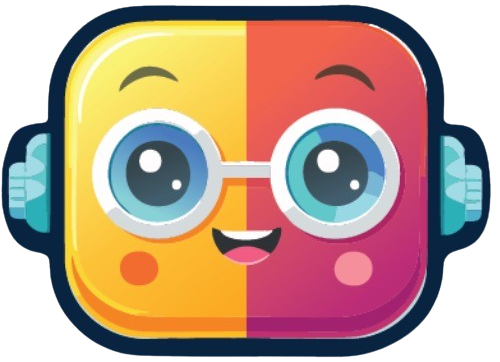Reimagine Productivity: Supercharge Your Workflow with Notion AI Project Planner!
Revolutionize your workflow with Notion AI! Customize, automate, and collaborate effortlessly. Turn ideas into action, meet deadlines, and manage projects smarter with the ultimate productivity tool!
January 25, 2025
I’m Sneha Parashar, a Software Developer and AI enthusiast specializing in AI tools for business productivity. With expertise in backend development and workflow automation, I help businesses streamline tasks. Through SimplifyAITools.com, I create accessible resources to help users leverage AI technologies.
×
Contact Sneha Parashar | Ninja
Table of Contents
The Notion AI Project Planner is a versatile tool for organizing and managing projects efficiently. It simplifies workflows by offering flexibility and features tailored to diverse project needs. Additionally, it allows you to plan, prioritize, and track progress in one central location, ensuring your projects are on track and deadlines are met.


Features of the Notion Project Planner
- Customizable Layout: Add, edit, or remove columns to suit your project needs.
- Sub-Tasks Support: Break projects into actionable steps using toggles or sub-items.
- Status Tracking: Visual tags like "Not Started," "In Progress," or "Done" help monitor progress at a glance.
- Deadline Management: Set deadlines and receive reminders to keep your project on schedule.
- AI Integration: Leverage Notion AI to generate ideas, summarize notes, or prioritize tasks.
- Collaboration Ready: Share the planner with team members and assign tasks to individuals.
- Cross-Platform Access: Access your planner on desktop, mobile, or tablet for seamless management.
Step-by-Step Guide
Step 1: Setting Up the Template
First, open your Notion workspace and create a new page. Next, name the page (e.g., "Project Planner"). After that, type/template in the body of the page and choose "Project Planner" from the list of options. Once selected, the template will load with default columns for Status, Project Name, and Deadline.
Step 2: Customizing Your Planner
- Modify Existing Columns:
- Use the default columns or rename them as needed. For instance, you might add columns like "Priority," "Team Members," or "Budget."
- Add New Columns:
- Click the "+" icon at the end of the table to add custom fields. Options include dropdown, date, or text.
- Customize Statuses:
- Update the status field with tags such as Not Started, In Progress, or Done.
Step 3: Adding Projects and Sub-Tasks
To begin, populate the planner with your projects. For instance, include details such as the deadline and status. Next, break down each project into sub-tasks by using toggle lists or sub-items. For instance:
- Define goals.
- Create a website layout.
- Select a tech stack.
Step 4: Leveraging Notion AI
Highlight a project and type/AI for assistance. You can use features such as generating sub-tasks, summarizing notes, or prioritizing tasks. These capabilities can streamline workflows and enhance productivity.
Step 5: Tracking and Managing Progress
- Update Status:
- Regularly move tasks from Not Started to In Progress or Done.

- Regularly move tasks from Not Started to In Progress or Done.
- Set Reminders:
- Add reminders to deadlines for timely notifications.
- Visualize Progress:
- Use color-coded tags for tasks (e.g., green for "Done," blue for "In Progress").
Step 6: Collaboration and Integration
First, share your planner with team members. Assign tasks to specific individuals and collaborate seamlessly through shared access. 2. Integrate Notion with other tools:- Sync with Google Calendar for deadline tracking.
- Use Slack for project updates and notifications.
Step 7: Review and Optimize
- Regularly review your planner to:
- Update deadlines and statuses.
- Refine sub-tasks based on progress.
- Archive completed projects to maintain a clutter-free workspace.
Comparison: Notion vs Other Project Management Tools
| Feature | Notion | Trello | Asana |
|---|---|---|---|
| Customization | High | Medium | Medium |
| Collaboration | Excellent | Good | Excellent |
| Visual Workflow | Good (Table View) | Excellent (Kanban) | Good |
| Integrations | Excellent | Good | Excellent |
| AI Assistance | Available | Not Available | Not Available |
| Offline Access | Limited | Limited | Moderate |
Pros and Cons
Pros:
- Flexibility: Fully customizable for different types of projects.
- AI Assistance: Saves time with automated suggestions and prioritization.
- All-in-One: Combines task tracking, scheduling, and collaboration in one place.
- User-Friendly: Easy to learn and use, even for beginners.
- Collaborative: Seamless team collaboration and task assignment.
Cons:
- Learning Curve: Advanced features can be overwhelming for new users.
- Performance Issues: May lag slightly with very large datasets.
- Offline Limitations: Limited functionality without an internet connection.
Conclusion
The Notion AI Project Planner is a game-changer for personal and professional project management. Thanks to its customizable design, powerful AI tools, and collaboration capabilities, it stands out as an exceptional solution. Whether you're an individual user or part of a team, the Notion Project Planner will help you stay organized and productive. Start planning today and simplify your workflow! Learn and Explore more technologies like this.Leave Your Comment Cancel Reply
You must be logged in to post a comment.

Very informative
Well Written